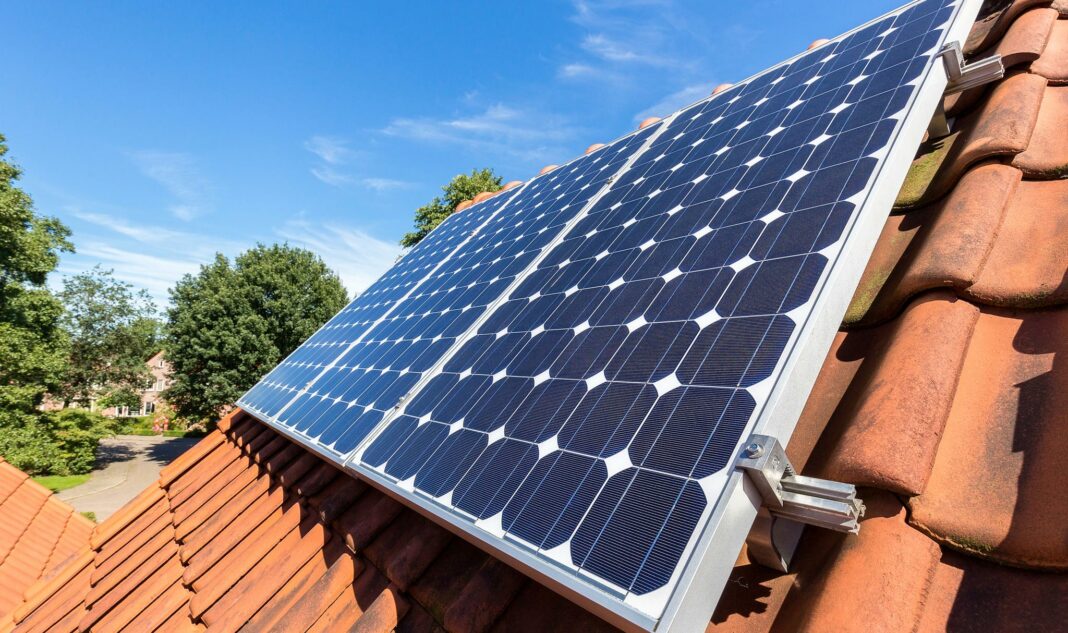Sri Lanka’s Solar Industries Association (SIA) yesterday urged the government to immediately grant a substantial hike in feed-in tariffs (FIT) for rooftop solar producers in line with the recent increase in input costs in order to revitalise rooftop solar production and to ensure the country’s energy security without burdening electricity consumers further by increasing electricity tariffs.
New investments into rooftop solar industry have come to a standstill with steep depreciation of the rupee, abnormally high interest rates, rising inflation and the Ceylon Electricity Board’s (CEB) failure to settle payments to rooftop solar producers. Despite the significant surge in input costs, the CEB maintains feed in tariffs granted to rooftop solar producers at Rs.22 per unit, which was last updated in 2016.
Due to the commercially nonviable feed-in tariff regime, investors have either canceled or delayed most of the upcoming rooftop solar projects. Banks are also refusing to finance rooftop solar projects due to this unfeasible feed-in tariff regime and CEB’s failure to settle payments owed to solar producers.
“Hence, we are urging the government to grant a financially-conducive feed-In tariff rate, which would attract new investment, allowing the rooftop solar sector to increase its conurbation to the national grid,” SIA Secretary Lakmal Fernando told reporters in Colombo yesterday.
The Ministry of Power and Energy has appointed a special committee for the rooftop solar industry to update the existing feed-in tariff rate granted to the producers. Though, the committee was scheduled to announce the new FIT rate this Tuesday, it was delayed by another week. According to SIA, 90 percent of solar system setting up costs is linked to imports. When the last feed in tariff revision was granted in 2016, the rupee/dollar exchange rate was around Rs.140 compared to the present Rs.360.
Moreover, Fernando noted that investors are forced to buy US dollars at grey market rates of around Rs.420 due to the shortage of forex in the banking sector.
Further, CEB has failed to settle Rs.28 billion worth payments to the country’s renewable energy producers. As a solution to this, SIA proposed the government to introduce a new facility termed ‘net billing’. Under this facility, the CEB would be able to offset retail electricity purchases of solar power producers automatically in the monthly electricity bill.
The proposed facility is expected to benefit particularly the household rooftop solar producers.
In addition, SIA also proposed the government to introduce preferential interest rates for rooftop solar projects. With the benchmark Treasury bond rates hovering around 27 percent, SIA President Kushan Jayasuriya pointed out that similar returns must be assured for rooftop solar investors in order to undertake such projects.
SIA warned that the CEB would be compelled to import more petrol and diesel for power generation with the failure of Unit one of the Norochcholai coal power station, ultimately resulting in another steep increase in electricity tariffs, unless the government comes up with a plan to rapidly absorb the excess energy produced in the renewable energy sector.
Fernando pointed out that rooftop solar is the most feasible method of adding renewable power to the national grid in the short-term, with the lowest cost and within the fastest deployable time range (1 day-4 months).
In addition, SIA believes that the country could add 1GW of solar rooftops per year for the next three years, which could save foreign exchange worth over US$ 3 billion over the same period.


